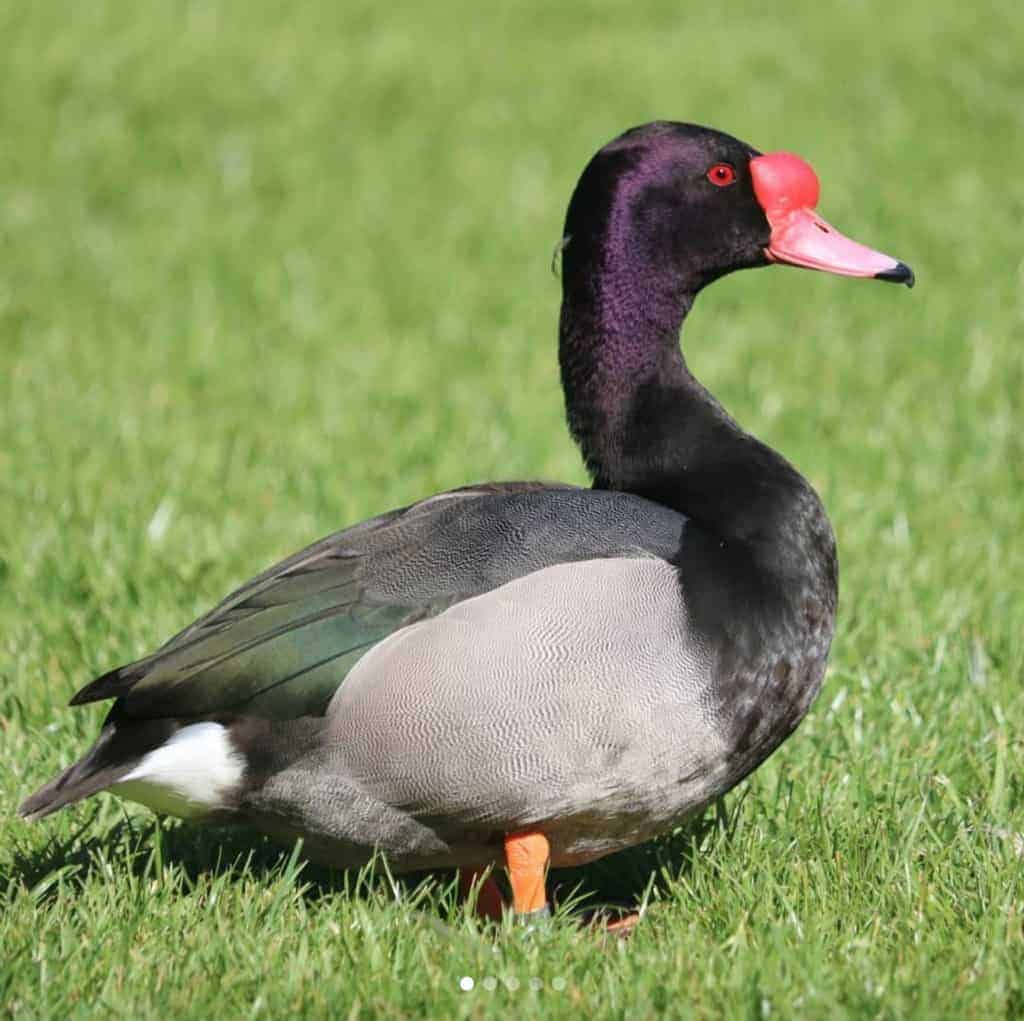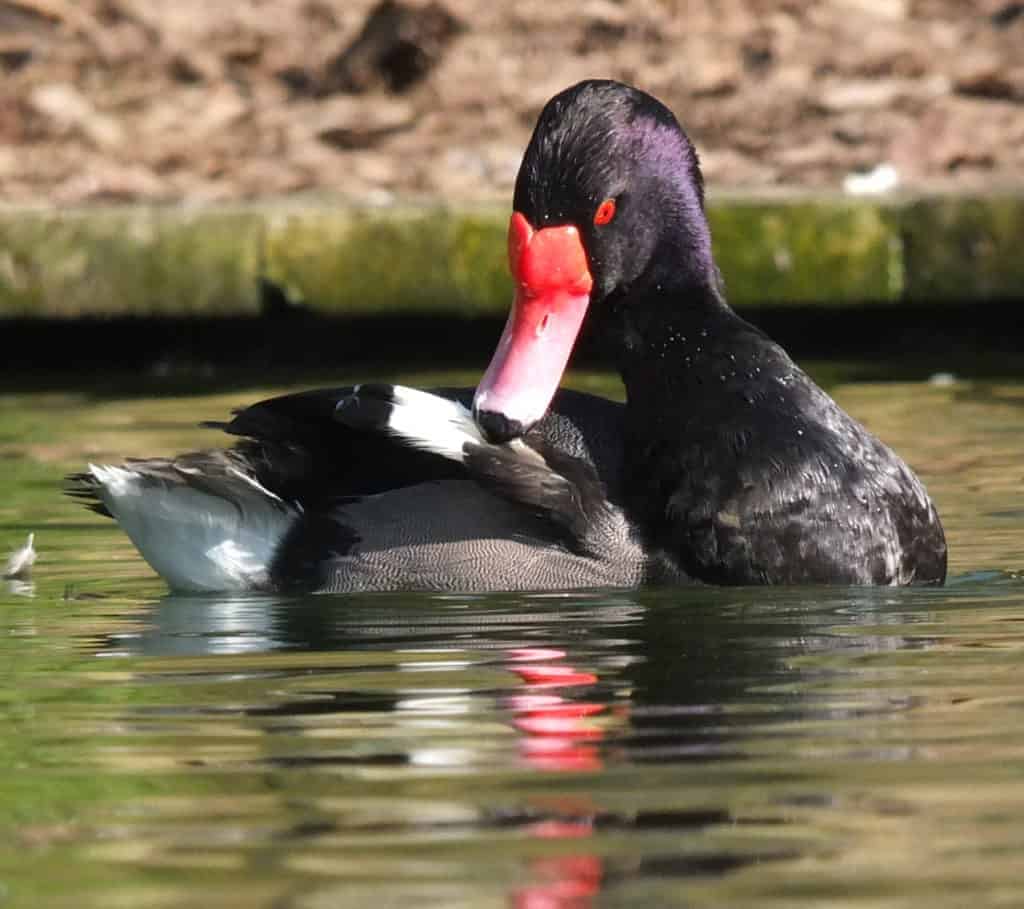Rosy-billed Pochard

Netta peposaca
One of the largest of the pochards, the South American Rosy-billed Pochard is similar to its congener, the Red-crested Pochard Netta rufina, in behaving like a dabbling duck. Though an accomplished diver, it prefers to feed by dabbling or up-ending in shallow water, and will readily feed on land. A sociable bird, it is typically found in small parties, while flocks of hundreds of birds will gather outside the breeding season.

This is a widespread and often abundant duck in central lowland South America. The drake is unmistakable with his distinctive red bill, which becomes deeper in colour and swells in size when breeding. The duck is a dull brown, with white feathering around the beak and on the throat.
The Rosy-billed Pochard has long been popular in collections as they are tame and friendly birds that are easy to breed. An added bonus is that the drake retains his colour all year. The female will lay her clutch of 10–12 eggs close to the water, but she will also dump eggs in the nests of other ducks. Incubation takes 25–28 days. They will hybridise with their congeners, Red-crested Pochards.
Share this page